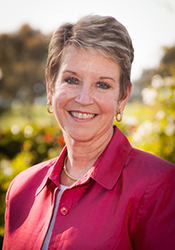Welcome Back to “Our Kids”
 AVID Center
AVID Center  Wednesday, September 9, 2015 at 5:21PM
Wednesday, September 9, 2015 at 5:21PM By Sandy Husk, CEO, AVID Center
Thousands of U.S. students have already begun the school year, and millions more are starting this week. About 5,000 AVID school site teams will implement the plans they’ve created to close the opportunity gap for our kids—almost one million AVID students nationwide! The work these educators will do to close the gap is vital for the future of our students and our country.
In his new book, Our Kids: The American Dream in Crisis, Robert Putnam drives this point home as he details the decline in opportunity for low-income children and families in the United States. He argues that now more than ever, our kids need lifelines from schools and communities so they can grow to meet their full potential.
Putnam spends a lot of time in the book explaining the current lack of mobility of low-income families, the barriers to choosing the best schools for their children, the dearth of rigorous course offerings at low-income schools, their inability to acquire the social capital necessary to advance their lives, and the toxic stress that negatively affects these children and families. And this lack of mobility has grown more severe over the last 50 years. More affluent families have more opportunities than ever, while lower-income families tend to have less.
Data from Putnam's research reveals growing divides between affluent and lower-income families in what he refers to as "scissors graphs." Click the image above for video of Putnam explaining his research. (Image Credit: Economist.com)
Standing in stark contrast to the struggling low-income schools Putnam writes about are some of our top AVID schools that are fighting every day to close the opportunity gap. Our AVID students prove that, with the right support and opportunity, they can create a college-going legacy for their family and community that is truly life-changing.
It would be hard to find a more challenging environment than that of Cajon High School in San Bernardino, California, an AVID site that was visited by The Atlantic writer Deborah Fallows. She wrote about how the school is successfully preparing its students for college and life in her article, “A High School That Changes Lives, One at a Time.”
At Cajon, a school with a free and reduced lunch rate of 85%, Fallows discovered a variety of support structures, including AVID, that produced a “can do” attitude among staff and students, resulting in a declining drop-out rate and increased graduation rate, along with a college-going culture. One AVID student interviewed by Fallows told her, “I’ll be the first to go to college. I want to change the pattern of the family, to create a new era for my younger sisters.”
If you want to see more of what’s possible on a campus with mostly low-income, predominantly Hispanic students, read Jay Mathews’ piece from Time.com, “What Educators Can Learn About a Southeast L.A. Turnaround.” True, over 90% of the 3,000 Bell Gardens students qualify for federal lunch subsidies, and the education level of the parents in 2013 was the lowest of any community of similar size in the state, a community where the median household income is slightly above $30,000 annually. Still, Bell Gardens made The Washington Post’s “Most Challenging High Schools” list, ranking in the top 7% of all U.S. schools in 2013, based on AP® exam participation.
The great thing about the success of these schools is that it is replicable. We have AVID educators from across the nation fighting every day to close the opportunity gap in their communities, and their work is more important now than ever before. Welcome to the new school year. Thank you for all that you do for our kids!
For more on AVID, visit AVID.org.
___________________________________________________________________________________________

Dr. Sandy Husk joined AVID Center as Chief Executive Officer in January 2014, bringing more than 17 years of experience implementing AVID in the three districts where she has served as superintendent, most recently in Salem-Keizer, Oregon, the second largest district in that state. As CEO, Sandy is responsible for implementing AVID’s strategic imperatives, which include furthering its mission of closing the achievement gap and preparing all students for college, accelerating the scalability of AVID as a schoolwide and districtwide system, developing student-centric technologies to enhance and sustain the student experience in AVID, and determining how AVID can best serve urban districts.
Want to read more blogs from Sandy? Check these out!
Teaching: I Knew It Was For Me
Reader Comments